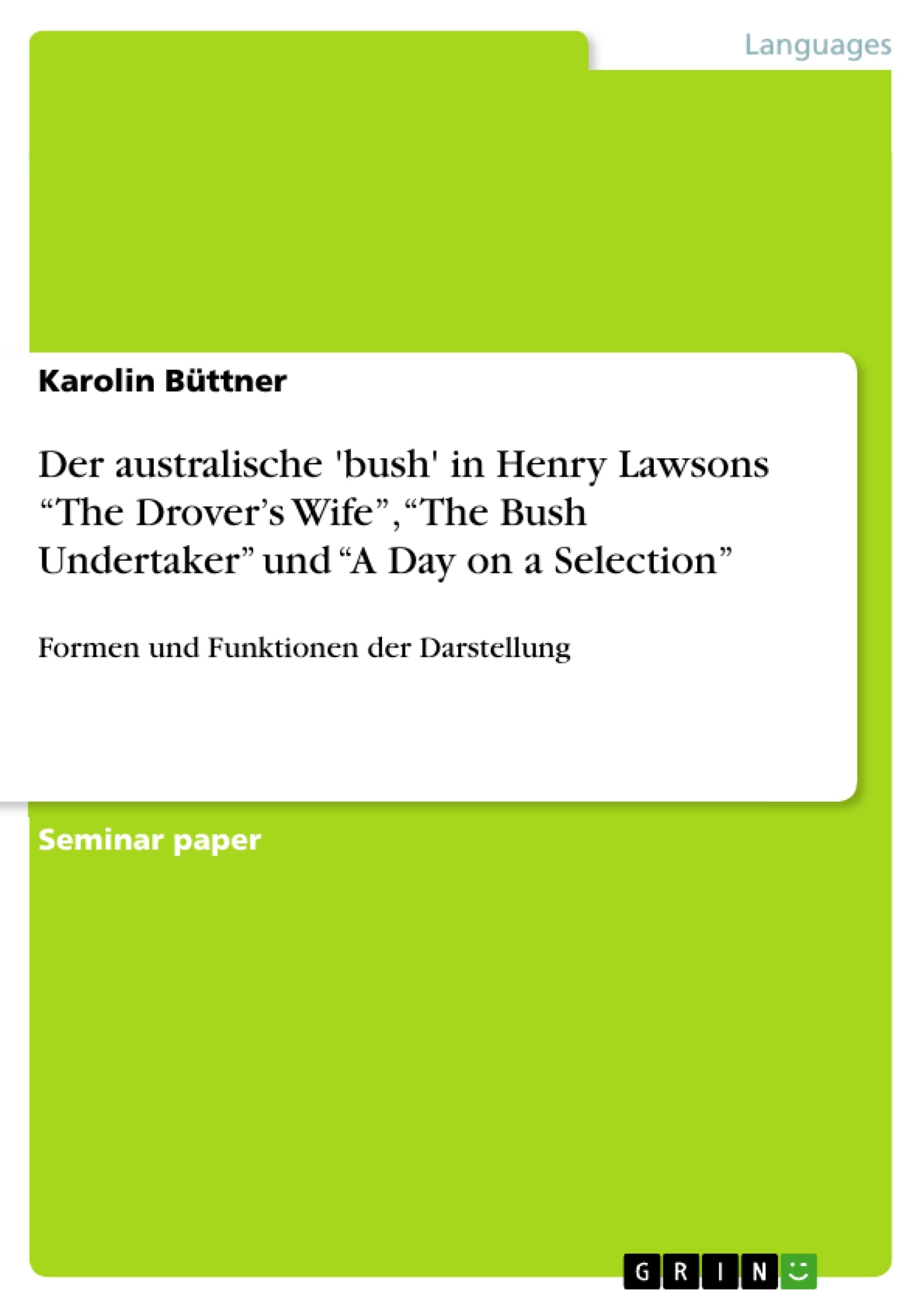“Bush is a term which probably derives from the Dutch word ‚bosch’ and was used as early as 1800. By the 1820s it was in common use to denote the unsettled areas of the Colony and, more specifically, as the Australian equivalent of the English words ‘woods’ and ‘forest’. Although many early settlers disliked and feared the bush, it did not go completely unpraised” (Wilde et. al. 1994: 128f.). However, “early complaints about the sombreness of the bush were strengthened by the many tragedies that befell the explorers and pioneers in their efforts to chart and settle it” (ibid. 129). The loneliness of the bush was mentioned also. When Adam Lindsay Gordon describes, in his preface to Sea Spray and Smoke Drift, “the dominant note of the Australian bush as one of ‘weird melancholy’ and the bush itself as ‘funereal, secret, stern’, he is reflecting the view that persisted for most of the first century of white settlement” (ibid. 129). With the 1890s and the upsurge of nationalism and, through works of writers such as Henry Lawson (1867 – 1922), the bush “comes to be viewed as a major shaping instrument of the Australian national spirit and outlook” (ibid. 129). This notion of the bush was developed further. Literature was now eager to show the “mystique of the bush, a sense that it was a sa-cred, inspiring power, influencing for good, both individual and nation” (ibid. 129). But the focus was not only on the things mentioned so far but also on the bush people and their lives. “[T]he bushman stereotype emerges as a rugged, versatile individualist, cheerful, laconic, philosophical in the face of hardship, independent in his own troubles but generous and loyal to his mates and others who need help” (ibid. 129f.). Life of the bush women became a matter of interest even though it was mentioned less frequently than that of men. Henry Lawson – “the voice of the bush” (Hermes 2007: 303) – was one of the authors who was interested in showing sketches from bush life to the readers of his short stories (Webby 2000: 65). His famous character sketches “The Drover’s Wife” and “The Bush Undertaker” and “A Day on a Selection”, all published in Lawson’s first major collection While the Billy Boils (1896), are examined more closely in this paper. A special focus will be on the forms in which the bush is represented to the reader and their functions with regard to the context of the story. [...]
Inhaltsverzeichnis (Table of Contents)
- Introduction
- Henry Lawson - the voice of the bush and the bush is the heart of Australia
- The Drover's Wife
- The Bush Undertaker
- A Day on a Selection
- Conclusion
Zielsetzung und Themenschwerpunkte (Objectives and Key Themes)
This paper examines the representation of the Australian bush in three short stories by Henry Lawson: "The Drover's Wife," "The Bush Undertaker," and "A Day on a Selection." The analysis focuses on the forms and functions of the bush depiction, exploring its role in shaping gender relations, identity, and the broader Australian national identity.
- Representation of the Australian bush in Lawson's short stories
- Functions of the bush depiction in relation to the context of each story
- Gender relations and identity in the context of the bush
- The portrayal of the bush as a site of both beauty and hardship
- Lawson's contribution to the development of an Australian national identity
Zusammenfassung der Kapitel (Chapter Summaries)
The first chapter introduces the concept of the Australian bush and its significance in the development of national identity. It explores the changing perceptions of the bush, from early settlers' fear and discomfort to its later embrace as a symbol of Australian ruggedness and spirit. The chapter then introduces Henry Lawson as a key figure in this transition, highlighting his role as a “voice of the bush” and his impact on shaping a distinct Australian identity.
The second chapter provides a close reading of "The Drover's Wife," examining the story's depiction of the harsh realities of life in the Australian bush and its impact on gender roles. The chapter delves into the portrayal of the female protagonist as a resilient and resourceful woman who is forced to confront the challenges of isolation and danger.
The third chapter delves into "The Bush Undertaker," focusing on the themes of death, isolation, and the role of the bush in shaping the protagonist's sense of identity. The chapter explores the story's somber tone and its reflection on the impact of the bush on the human psyche.
Schlüsselwörter (Keywords)
The paper focuses on key themes like the Australian bush, national identity, gender relations, identity formation, realism, and the works of Henry Lawson, including "The Drover's Wife," "The Bush Undertaker," and "A Day on a Selection."
- Arbeit zitieren
- Karolin Büttner (Autor:in), 2008, Der australische 'bush' in Henry Lawsons “The Drover’s Wife”, “The Bush Undertaker” und “A Day on a Selection”, München, GRIN Verlag, https://www.hausarbeiten.de/document/139667


